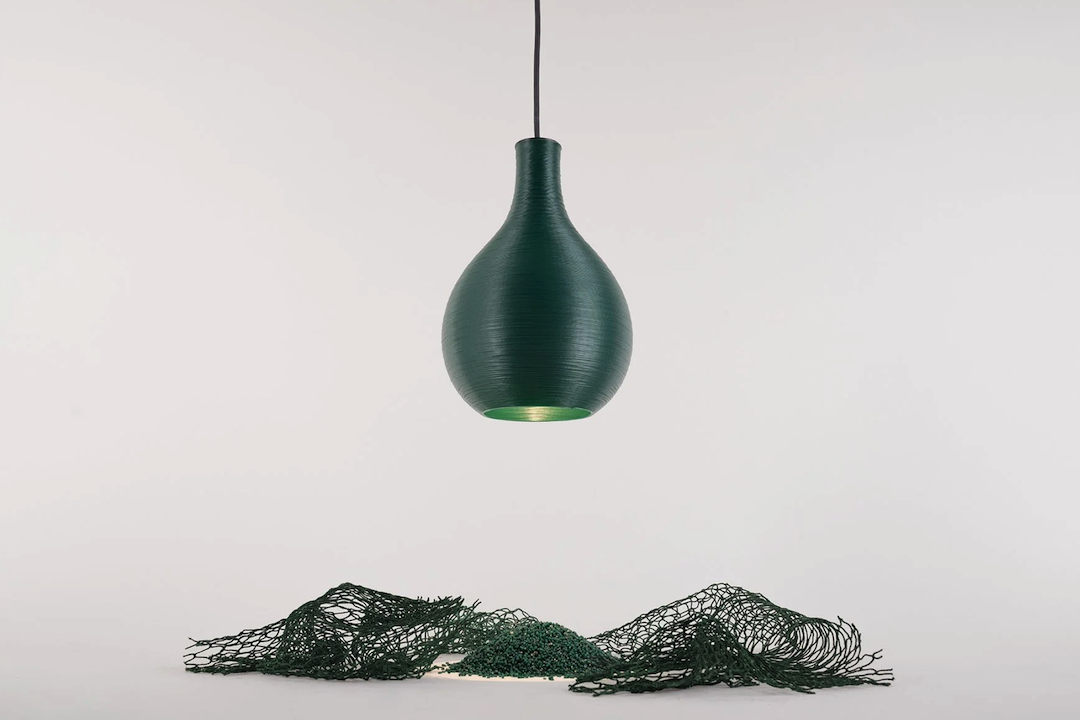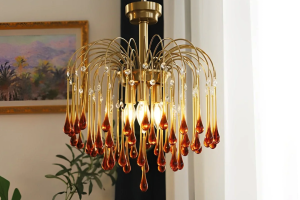
Upcycled Plastic Art Lamp: Eco-Friendly Illumination
In recent years, the art world has witnessed a significant shift towards sustainability, with upcycled art emerging as a prominent trend. This movement is characterized by the creative repurposing of discarded materials into new artistic forms, effectively transforming waste into valuable pieces of art. Artists and designers are increasingly recognizing the potential of upcycling not only as a means of environmental conservation but also as a way to express creativity and individuality.
The rise of upcycled art reflects a broader cultural shift towards eco-consciousness, where consumers are more aware of their environmental footprint and are actively seeking out sustainable alternatives in their purchasing decisions. The appeal of upcycled art lies in its unique aesthetic and the stories behind each piece. Unlike mass-produced items, upcycled artworks often carry a narrative that connects them to their previous lives, imbuing them with character and depth.
For instance, an artist might transform old plastic bottles into a stunning light fixture, each bottle representing a moment in time and a reminder of the waste generated by consumer culture. This narrative aspect not only enhances the visual appeal of the artwork but also invites viewers to engage with the environmental issues at play, fostering a deeper appreciation for sustainable practices in design.
The Environmental Impact of Plastic Waste and the Importance of Upcycling
Plastic waste has become one of the most pressing environmental challenges of our time. With millions of tons of plastic entering landfills and oceans each year, the consequences for wildlife and ecosystems are dire. Marine life is particularly affected, as animals ingest plastic debris or become entangled in it, leading to injury or death.
Furthermore, the production of new plastic contributes to greenhouse gas emissions, exacerbating climate change. In this context, upcycling emerges as a vital strategy for mitigating the impact of plastic waste. By creatively reusing materials that would otherwise contribute to pollution, artists and designers can help reduce the demand for new plastic production while simultaneously raising awareness about the issue.
Upcycling not only addresses the problem of waste but also promotes a circular economy, where materials are kept in use for as long as possible. This approach contrasts sharply with the traditional linear model of production and consumption, which often leads to excessive waste and resource depletion. By embracing upcycling, individuals and communities can contribute to a more sustainable future, where resources are valued and reused rather than discarded.
The importance of upcycling extends beyond individual actions; it encourages a collective shift in mindset towards sustainability, inspiring others to consider how they can incorporate eco-friendly practices into their own lives.
The Creative Process: How Upcycled Plastic Art Lamps are Made
The creation of upcycled plastic art lamps Omelighting involves a meticulous and imaginative process that transforms everyday waste into functional art pieces. Artists often begin by sourcing materials from local recycling centers, thrift stores, or even their own households. This scavenging phase is crucial, as it allows artists to select items that resonate with their vision while also ensuring that they are repurposing materials that would otherwise contribute to landfill overflow.
Common materials include plastic bottles, containers, and packaging, which can be manipulated in various ways to create unique designs. Once the materials are gathered, the artist embarks on the design phase, where they conceptualize how to best utilize each item. This stage often involves sketching ideas or creating digital mock-ups to visualize the final product.
The actual construction process can vary widely depending on the artist’s style and the intended function of the lamp. Some artists may cut and reshape plastic components to form intricate patterns or textures, while others might combine multiple elements to create a cohesive design. Techniques such as melting, weaving, or layering can be employed to enhance the aesthetic appeal of the lamp while ensuring its functionality as a light source.
The Versatility of Upcycled Plastic Art Lamps: From Functional Lighting to Statement Pieces
Upcycled plastic art lamps exemplify versatility in design, serving both practical purposes and artistic expression. These lamps can range from simple, minimalist designs that blend seamlessly into any decor to bold statement pieces that command attention in a room. For instance, a lamp made from repurposed plastic bottles might feature a sleek silhouette that complements modern interiors, while another crafted from colorful packaging could serve as a vibrant focal point in a more eclectic space.
This adaptability makes upcycled lamps an attractive option for consumers looking to enhance their living environments with unique lighting solutions. Moreover, the versatility of these lamps extends beyond aesthetics; they can also be tailored to meet various functional needs. Some designs incorporate adjustable brightness settings or innovative light diffusion techniques that enhance their usability in different settings.
For example, an upcycled lamp designed for outdoor use might feature weather-resistant materials and energy-efficient LED bulbs, making it suitable for garden parties or patio gatherings. This blend of functionality and artistry not only elevates the role of lighting in interior design but also encourages consumers to consider how they can integrate sustainable practices into their everyday lives.
Supporting Sustainable Practices: How Upcycled Plastic Art Lamps Contribute to a Greener Future
The production and use of upcycled plastic art lamps play a significant role in promoting sustainable practices within the broader context of environmental conservation. By choosing these lamps over traditional lighting options, consumers actively participate in reducing plastic waste and supporting eco-friendly initiatives. Each purchase represents a commitment to sustainability and an acknowledgment of the importance of rethinking consumption patterns.
Furthermore, many artists who create these lamps prioritize ethical sourcing and production methods, ensuring that their work aligns with environmentally responsible practices. In addition to reducing waste, upcycled plastic art lamps often utilize energy-efficient lighting technologies such as LED bulbs. These bulbs consume significantly less energy than traditional incandescent options, resulting in lower electricity bills and reduced carbon emissions over time.
By integrating energy-efficient lighting into their designs, artists not only enhance the sustainability of their products but also educate consumers about the benefits of making environmentally conscious choices in their homes. This holistic approach to sustainability fosters a culture of awareness and responsibility that extends beyond individual purchases.
The Intersection of Art and Sustainability: The Role of Upcycled Plastic Art Lamps in Contemporary Design
Upcycled plastic art lamps occupy a unique space at the intersection of art and sustainability, challenging traditional notions of both fields. In contemporary design, there is an increasing recognition that art can serve as a powerful vehicle for social change and environmental advocacy. Artists who work with upcycled materials often aim to provoke thought and inspire action regarding pressing issues such as climate change and resource depletion.
By transforming discarded plastics into beautiful lighting fixtures, they demonstrate that creativity can flourish even within constraints imposed by environmental challenges. This intersection also encourages collaboration between artists, designers, and environmental organizations. Many initiatives now exist that promote upcycling as a means of raising awareness about sustainability while providing artists with platforms to showcase their work.
Exhibitions dedicated to upcycled art not only highlight innovative designs but also engage audiences in discussions about waste reduction and responsible consumption. As more consumers seek out sustainable products, the demand for upcycled art lamps continues to grow, further solidifying their place within contemporary design narratives.
Upcycled Plastic Art Lamps in Interior Design: Incorporating Eco-Friendly Illumination into Your Home
Incorporating upcycled plastic art lamps into interior design offers homeowners an opportunity to embrace eco-friendly illumination while making bold design statements. These lamps can be seamlessly integrated into various design styles, from rustic to modern minimalist aesthetics. For instance, an upcycled lamp featuring intricate patterns created from repurposed plastic can add texture and visual interest to a contemporary living room, while a more subdued design might complement a Scandinavian-inspired space characterized by simplicity and functionality.
Moreover, these lamps serve as conversation starters, inviting guests to engage with the stories behind each piece. Homeowners can share insights about the materials used and the artist’s creative process, fostering discussions about sustainability and environmental responsibility. This aspect not only enhances the overall ambiance of a space but also aligns with a growing trend among consumers who prioritize meaningful connections with the products they choose for their homes.
The Future of Upcycled Plastic Art Lamps: Innovations and Trends in Sustainable Lighting
As awareness around environmental issues continues to grow, the future of upcycled plastic art lamps looks promising with ongoing innovations and trends shaping sustainable lighting solutions. Artists are increasingly experimenting with new techniques and technologies that enhance both functionality and aesthetics. For example, advancements in 3D printing allow for more intricate designs that were previously difficult to achieve using traditional methods.
This technology enables artists to create complex shapes from recycled plastics while minimizing material waste during production. Additionally, there is a rising trend towards incorporating smart technology into upcycled lighting designs. Smart lamps equipped with features such as remote control capabilities or integration with home automation systems offer consumers greater convenience while maintaining an eco-friendly ethos.
As these innovations continue to evolve, upcycled plastic art lamps will likely become even more versatile and appealing to consumers seeking sustainable alternatives in their homes. The future landscape for upcycled plastic art lamps is not just about aesthetics; it is also about fostering a culture of sustainability that resonates with consumers on multiple levels. As artists push boundaries and explore new possibilities within this realm, they contribute to a growing movement that champions creativity alongside environmental stewardship—an essential balance for addressing the challenges posed by our modern world.


